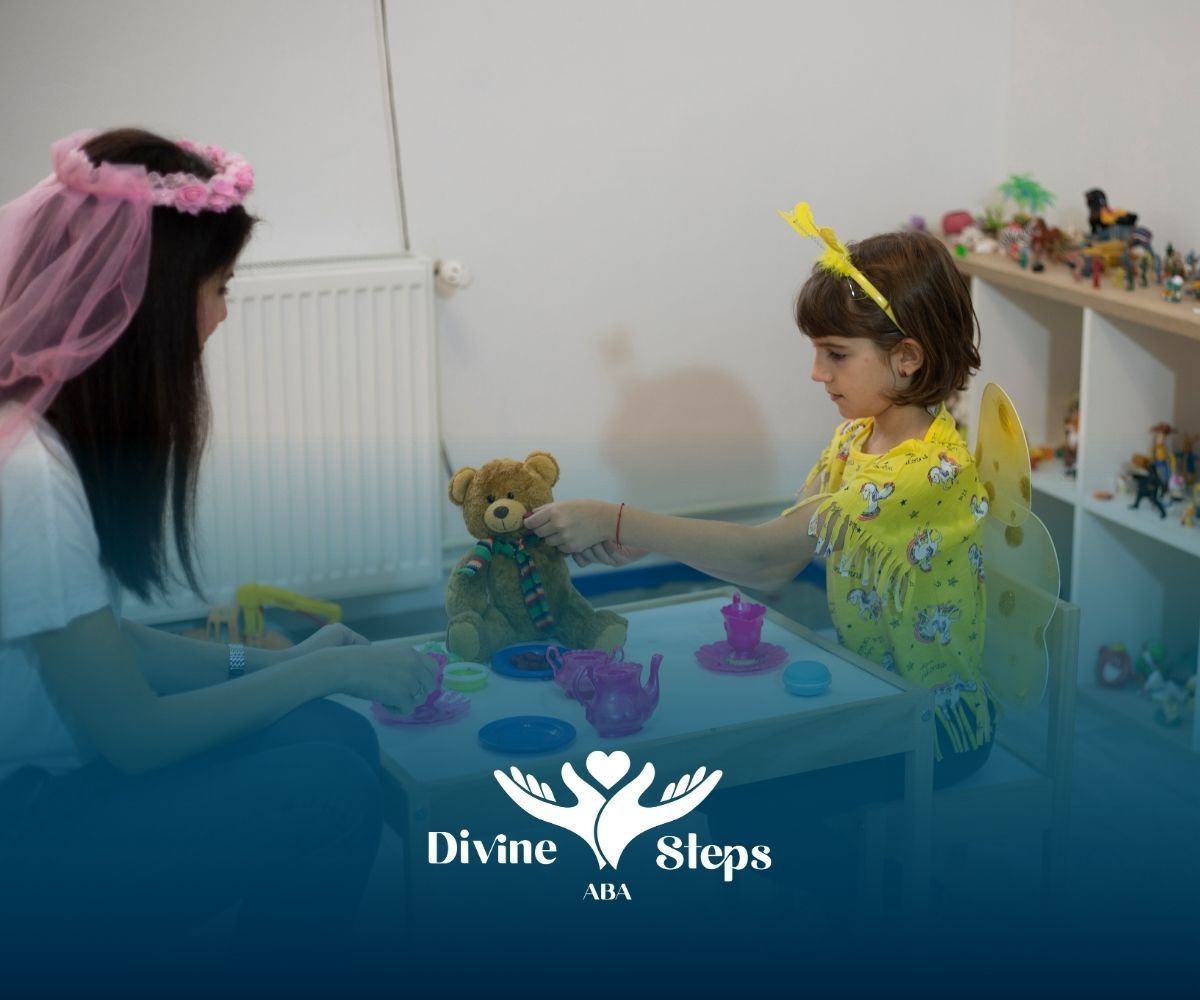Website by CWS
The Science Behind ABA Therapy for Children with Autism
Understanding how children learn and behave has helped shape powerful therapies—none more evidence-based than Applied Behavior Analysis (ABA). Rooted in the science of behavior, ABA therapy relies on research, data, and direct observation to help children with autism reach measurable milestones.
I remember working with a child who had difficulty following multi-step instructions. We applied task analysis and chaining techniques rooted in behavioral science. Within months of in-home ABA therapy, he was independently completing his morning routine.
Watching him take those steps without prompts wasn’t just progress—it was science in action.
Scientific Principles Behind ABA
Behavioral Theories That Guide Practice
ABA therapy draws on behavioral psychology, especially the principle of operant conditioning, introduced by B.F. Skinner. In simple terms, behaviors followed by positive outcomes are more likely to occur again.
Therapists use principles such as:
- Positive Reinforcement: Rewarding desired behaviors to strengthen them
- Extinction: Reducing reinforcement for unwanted behaviors
- Prompting and Fading: Guiding correct responses and slowly removing support
Evidence-Based and Data-Driven
Years of research, especially studies published in the Journal of Applied Behavior Analysis, support ABA’s effectiveness.
Intensive ABA programs (25–40 hours per week) have shown significant improvements in communication, behavior, and learning—especially when started early.
ABA is not limited to children. Adults with developmental disabilities can also benefit through structured interventions tailored to their needs.
Key Components of ABA Therapy for Children
Assessments and Behavioral Planning
Therapy begins with a functional behavior assessment (FBA) to understand why certain behaviors happen. By examining what triggers and maintains behaviors, therapists can create individualized plans that support positive change.
Setting Clear, Measurable Goals
ABA programs define specific, measurable goals. For example, improving eye contact, requesting items using words, or completing daily tasks like brushing teeth.
These goals are broken into small steps to help children progress gradually and confidently.
Ongoing Progress Monitoring
Therapists use several data collection tools:
| Method | Purpose |
|---|---|
| Direct observation | Tracks real-time behavior during sessions |
| Behavior charts | Measures progress on targeted skills |
| Session notes | Documents overall response to treatment |
This data guides therapy adjustments and ensures interventions are effective.
Core Techniques Used in ABA Therapy
Positive Reinforcement
Reinforcement is central to behavior change in ABA. When a child receives praise, access to a favorite toy, or another reward after a desired behavior, they are more likely to repeat it.
Therapists use reinforcement strategies like:
- Token systems
- Verbal praise
- Access to activities
Differential reinforcement targets specific behaviors while minimizing attention to undesirable actions.
Prompting and Fading
Prompts guide children toward correct responses—these might be verbal, visual, or physical cues. For instance, showing a child how to tie their shoes step-by-step.
Once a child begins to succeed, prompts are gradually removed. This helps them become independent and confident in performing the skill on their own.
Shaping and Chaining
Shaping involves rewarding small steps toward a new skill. For example, clapping hands might be a first step in learning to wave goodbye.
Chaining links smaller steps into a full task. For example, handwashing is broken into turning on water, using soap, rinsing, and drying. Each step is taught and reinforced in sequence.
ABA Therapy for Children with Autism
Early Intervention Makes a Difference
Starting ABA therapy early—ideally before age five—can lead to stronger developmental outcomes. Early intensive behavioral intervention (EIBI) helps children build foundational communication and social skills that are crucial for long-term success.
Children often show better engagement in school and daily life when early therapy addresses skills like:
- Eye contact
- Following instructions
- Expressing wants and needs
Addressing Challenging Behaviors
Challenging behaviors, like aggression or self-injury, are addressed through functional assessments to find their cause.
Therapists use tailored strategies, such as teaching replacement behaviors and adjusting environmental triggers, to reduce these behaviors over time.
Positive reinforcement is always emphasized over punitive methods.
Building Everyday Life Skills
ABA helps children gain independence by targeting real-life skills such as:
- Dressing
- Toileting
- Eating
- Navigating social situations
Therapists use task analysis to teach these skills in manageable steps, ensuring they are retained and applied in everyday life.
Customizing ABA Therapy for Individual Needs
Creating Personalized Treatment Plans
No two children are the same. ABA therapists assess each child’s behavior patterns, communication abilities, and learning style to create a plan that fits their unique strengths and challenges.
Plans include:
- Specific behavior goals
- Reinforcement strategies tailored to motivation
- Adaptations for different settings (home, school, community)
Supporting Skill Generalization
Therapy is most successful when children can use their new skills in real-world settings. ABA programs help generalize learning by practicing across different environments and with different people.
Ongoing assessments help ensure skills are not only learned but maintained over time.
The Role of Families in ABA Therapy
Why Family Involvement Matters
When families are involved in therapy, children are more likely to succeed. Parents and caregivers learn how to reinforce skills at home, understand behavior patterns, and support therapy goals consistently.
Families participate in:
- Treatment planning
- Goal setting
- Using strategies at home
This teamwork approach increases consistency and promotes progress beyond therapy sessions.
Helping Skills Last Over Time
To ensure long-term results, ABA therapists focus on helping children apply skills across various settings—home, school, community—and over time.
Parents are trained to support maintenance of skills and to encourage continued learning as children grow.
Ethical Practice and Addressing Concerns
Clarifying Misconceptions About ABA
Some believe ABA is rigid or overly focused on control. In reality, today’s ABA emphasizes dignity, respect, and child-centered care. Positive reinforcement—not punishment—is central to therapy.
Therapists use data, empathy, and collaboration to guide their approach. Their goal is not to "fix" children but to support them in reaching their full potential.
Following Professional and Ethical Standards
Board Certified Behavior Analysts (BCBAs) are bound by ethical guidelines that prioritize:
- Informed consent
- Respect for client rights
- Individualized, compassionate care
They also commit to continuing education to improve their knowledge and uphold professional standards.
Adapting to Evolving Needs
ABA is a dynamic field. As new research and feedback emerge, professionals adapt their methods to meet the evolving needs of clients.
Listening to autistic voices and working collaboratively with families ensures therapy remains relevant, ethical, and effective.
Conclusion
ABA therapy provides children with autism spectrum disorder the tools to grow socially, emotionally, and behaviorally. By focusing on personalized plans, positive reinforcement, and evidence-based methods, ABA helps children learn skills that improve their quality of life.
With family involvement and ethical practice, ABA can lead to long-lasting success. The field continues to evolve, always aiming to provide respectful and meaningful support for each individual child.
At Divine Steps ABA, we use the proven science of behavior analysis to guide every therapy session. Our Board-Certified Behavior Analysts create personalized, data-driven plans designed to help children with autism build real-world skills—from communication to daily routines.
Backed by research.
Grounded in science.
Focused on results that matter.
Reach out to Divine Steps ABA and discover how behavioral science can support your child’s next steps.
Frequently Asked Questions
Is ABA therapy effective for all children with autism?
ABA is highly effective for many children, but outcomes depend on the child’s unique needs and the quality of the program. It works best when individualized and consistently implemented.
What does a typical ABA session involve?
Sessions are structured and may include play-based learning, one-on-one teaching, data collection, and reinforcement of specific behaviors. Activities are adapted to meet each child’s goals.
How is progress measured in ABA therapy?
Therapists track behavior changes using data on frequency, duration, and intensity. This helps determine if goals are being met and what changes, if any, are needed.
Sources:
- https://pmc.ncbi.nlm.nih.gov/articles/PMC6494600/
- https://my.clevelandclinic.org/health/treatments/25197-applied-behavior-analysis
- https://autismsciencefoundation.org/the-truth-about-applied-behavioral-analysis/
- https://www.bacb.com/about-behavior-analysis/
- https://www.kennedykrieger.org/patient-care/centers-and-programs/neurobehavioral-unit-nbu/applied-behavior-analysis/scientific-support-for-applied-behavior-analysis




